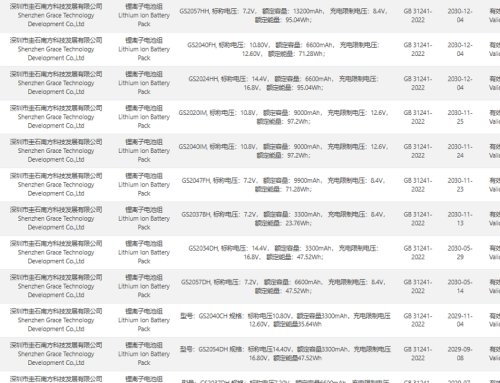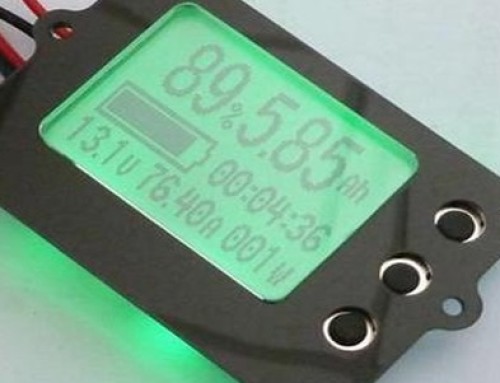The Qualities That Need To Be Present In A Quality Medical Battery
The Difference Between Quality Medical Batteries and Poor Quality Medical Batteries
Quality medical batteries and poor quality medical batteries differ significantly in several ways, and these differences are mainly in the following areas:
1. Safety: High-quality medical batteries typically undergo rigorous safety testing and certification to ensure their safety in medical applications. They may have higher fire and explosion protection levels, whereas poor-quality batteries may not have undergone the same rigorous safety assessment.
2. Reliability: High-quality medical batteries are designed to provide a continuous and reliable power supply during critical times, such as during surgery or emergencies. In contrast, poor-quality batteries may not guarantee consistent performance and may be at risk of sudden failure.
3. Performance: Quality medical batteries have higher energy density, longer cycle life, and better charge/discharge performance. This means they can deliver more energy without sacrificing size or weight and withstand more charge/discharge cycles.
4. Temperature range: High-quality medical batteries can adapt to a broader range of temperatures and maintain performance in extreme conditions, critical for medical devices used in different environmental conditions. Inferior batteries may experience a dramatic drop in performance under temperature changes.
5. Accuracy: When it comes to battery management systems (BMS), quality medical batteries are equipped with advanced monitoring systems that accurately monitor the battery’s state of charge (SOC) and state of health (SOH) to optimize the battery’s life and performance.
6. Compliance and certification: A quality medical battery will comply with relevant medical industry standards and regulatory requirements, such as ISO 13485, to ensure its suitability for use in the medical field. Poor-quality batteries may not have these certifications, increasing the risk of use.
7. Manufacturing and materials: Quality medical batteries use materials and manufacturing processes that are more refined and of a higher standard to ensure consistency and durability. In contrast, poor-quality batteries may use low-cost materials and have a rough manufacturing process, affecting the overall quality and performance of the battery.
8. Brand and after-sales service: Medical batteries of well-known brands usually provide better after-sales service and technical support, while low-quality batteries may lack these services, causing users inconvenience during use.
When choosing medical batteries, priority should be given to their safety, reliability, and performance to ensure that the medical equipment can work properly at critical moments and ensure patient safety.
How can lithium batteries face the challenge of aging and maintain the accuracy of battery life?
Lithium battery aging is an unavoidable phenomenon during its use. Still, there are some ways to slow down the aging rate, maintain the accuracy of the battery’s lifespan, and plan for the replacement of the battery:
1. Understanding the aging mechanism: First, it is essential to understand the causes of lithium battery aging. Aging mechanisms mainly include loss of active lithium (LLI) and loss of active material (LAM) in the positive and negative electrodes and decomposition of the electrolyte.
2. Optimize charging strategy: Avoid overcharging and over-discharging the battery, and try to keep it in the 30% to 80% charge range, which helps reduce the stress and aging rate of the battery.
3. Use appropriate charging equipment: To minimize potential damage to the battery, use official or certified chargers and avoid using unsuitable fast chargers or miscellaneous rechargeables.
4. Avoid extreme temperatures: High-temperature environments accelerate battery aging, so avoid using or charging your phone for long periods under high-temperature conditions.
5. Battery calibration: Perform regular battery calibration to ensure that the charge level is displayed accurately, which helps to maintain a healthy battery.
6. Battery status monitoring: Use a battery monitoring system to track the health of your battery, including parameters such as its capacity, internal resistance, and voltage, to predict its life.
7. Battery Management System (BMS): Use an advanced battery management system that monitors, balances, protects, and communicates with the battery to improve its reliability and extend its life.
8. Aging test: The aging test can be used to understand the change in battery performance under different conditions and plan for battery replacement.
9. Material and design optimization: Selecting suitable battery materials and designs, such as using single-crystal materials, optimizing electrolyte additives, and designing appropriate electrode porosity and thickness, can effectively enhance the battery’s cycle life.
10. Regular maintenance: Regular maintenance of the battery includes cleaning the contact points and checking whether the battery is swollen or damaged.
11. Use of suitable batteries: For specific applications, choose batteries with high cycle stability and suitable application conditions; for example, lithium titanate anode batteries are ideal for fast charging applications due to their high safety and long cycle life.
Through the above measures, the challenges of aging Li-ion batteries can be effectively addressed to extend battery life and accurately predict the point at which batteries should be replaced.




